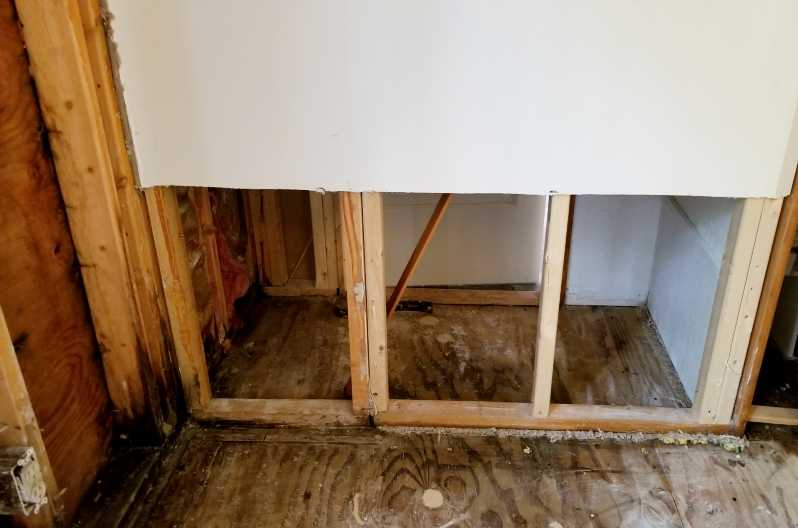
Drywall is a sturdy building material often chosen for its versatility and ease of installation. However, it can lose its structural integrity, becoming soft and weak, when it gets wet. Depending on what category of water your drywall was exposed to, the length of time it remained wet and the extent of the flooding, it may be possible to save it. However, time is of the essence if you hope to avoid mold damage.
CHECK THE WALL FOR MOISTURE
Following a plumbing leak or water penetration, it’s important to check your drywall for moisture. Here’s how:
- Test the drywall by using a non-penetrating moisture meter to detect water near the surface of the drywall. Another method is to remove the baseboards and poke a small hole through the wall with a screwdriver. If the drywall feels soft, that means it’s wet.
- Test the interior of the wall: Use a penetrating moisture meter to detect water further inside the wall structure. You can also cut a larger hole to check for moisture on the wall studs and insulation.
- If water came from one room to another, “through the wall” it is a safe bet it is or was wet.
WHAT TO DO IF MOISTURE IS PRESENT
If your moisture tests come back positive, or you are pretty sure the wall was wet due to the source of the water, here’s what to do:
- Dry the wall: Assess the drywall for mold. If there is none, you shouldn’t need to replace it. Instead, dry the wall with high-volume fans and a structural drying dehumidifier. Wet walls can hold onto moisture for a long time, so thorough drying is necessary to prevent future mold growth. If you are not sure if there is mold or other bacteria, assume there is and remove the drywall.
- Remove wet insulation: The water that damaged your drywall most likely soaked into the wood studs and insulation as well. Fiberglass and cellulose lose R-value and can harbor mold growth when they become damp. These types of insulation can’t be dried out, so you’ll need to cut open the wall and remove the wet insulation. Once the area has been thoroughly dried, replace the insulation before repairing the wall.
WHEN TO REPLACE DRYWALL AFTER WATER DAMAGE
Do not attempt to save your wet drywall in any of these scenarios:
Mold on drywall: Few health concerns are more serious than having mold growth inside your walls. Only a trained professional should handle and remove moldy materials because of the potential health hazards and the risk of spreading spores throughout the house.
Category 2 or Category 3 water damage: Category 1 (clean water) damage poses no health risks beyond possible mold growth. However, Category 2 (greywater) and Category 3 (blackwater) introduce contaminants into your home. If the damage stemmed from wastewater, storm water, or sewage, replace the drywall regardless of whether mold is present or not.
Ceilings: if drywall on the ceiling has become saturated you need to remove the drywall as it is a high risk of falling and causing injury, wet drywall can retain its structural integrity on vertical surfaces, but not on horizontal surfaces.
If the walls are or were suspected of being wet for more than 24 hours. Category 1 water can turn into category category 2 or even 3, if the water is not dried up quickly. According to the IICRC standards, “when in doubt, tear it out”, the cost of replacing drywall is minimal compared to the cost of dealing with long term issues caused by mold or bacteria growth left unchecked in your walls.
As a leading IICRC Certified firm and water damage repair company in Metro Atlanta, RestoPros can clean or remove your water-damaged drywall from start to finish. We can assist you with structural drying, remediation, personal content restoration, pack out services, deodorizing, mold removal, and final cleanup. We’ll work with your insurance company to get your home back to normal as quickly as possible. Feel free to call us 24 hours a day at 770-609-2301 or contact us online if you think your drywall is wet.
